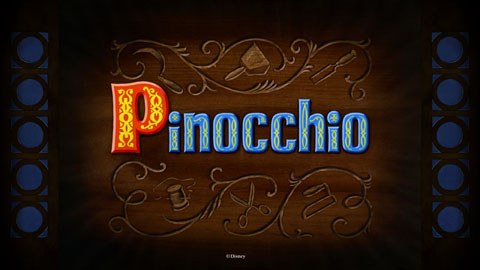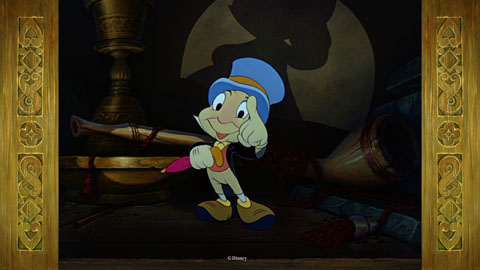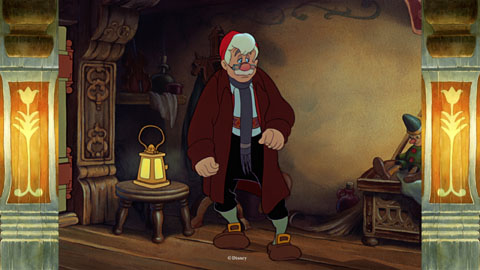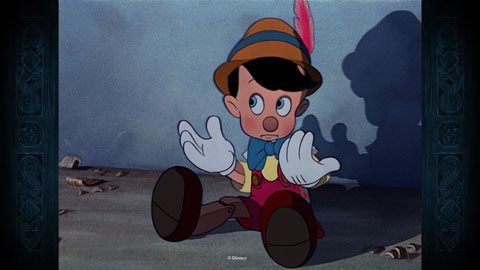 Legendary Disney artist Toby Bluth explains the process of “Disney View,” which enhances the BluRay experience of the 70th Anniversary Platinum Edition of “Pinocchio.”
Legendary Disney artist Toby Bluth explains the process of “Disney View,” which enhances the BluRay experience of the 70th Anniversary Platinum Edition of “Pinocchio.”
BY KEVIN CARR
Over the years, the Walt Disney Company has treasured its classic animated films, bringing them out of the vault periodically for limited releases on home video. Once digital home entertainment took hold with the public, Disney has given its most revered films for releases in Platinum Editions, which feature multi-disc releases and restored footage and sound, plus plenty of bonus features.
Now that the BluRay hi-def format is widely available, Disney is moving their Platinum releases to this new superior format. The most recent Platinum Edition is the 1940 classic “Pinocchio,” which is getting a 70th anniversary release on March 10, 2009.
One of the advantages of hi-def viewing is the ability to watch films in their original widescreen aspect ratio on a HD-TV. However, for films like “Pinocchio,” there is no widescreen presentation because the original aspect ration was only 4×3.

For the BluRay release of “Pinocchio,” the Mouse House has developed a new feature that allows viewers to enjoy the classic film in a new widescreen format. “We were concerned that viewers would be disappointed with the black bar spacing,” said Evan Acosta, part of the production team on the BluRay release. “We didn’t want the viewer to feel as if they had to stretch or distort the film to fill those black bars, because most people when they view anything with 4 by 3 presentations, they tend to zoom or stretch the image on their screen, therefore distorting the film.”
Dubbed “Disney View,” this process does not involve cropping the picture, but rather adding to the feature so the viewer doesn’t have to see black matte bars on the side of the frame. “The idea was to just to support that format,” Acosta said. “Let’s still keep the same aspect ratio of the film but add a little – a little enhancement if you will, to sort of bring it into this new age of 16 by 9 presentation. So essentially that’s sort of where the idea began, where it stemmed.”

For “Pinocchio,” Disney brought in legendary animator Toby Bluth to paint panels for either side of the frame. Bluth grew up in Payson, Utah, where he would ride his horse into town with his brother Don (who also later became a famous Disney animator) to see the classic Disney animated films at the Star Theatre. “The period I like with the Disney Studios, with Walt Disney is when Walt was making the films,” Bluth explained. “The first five films he made, and I think they’re probably the most important Walt Disney films that were made, are ‘Snow White,’ ‘Pinocchio,’ ‘Dumbo,’ ‘Fantasia,’ ‘Bambi,’ and those are the crown jewels.”
Bluth used the side panels he created to enhance the film experience, mirroring the style and flavor of the “Pinocchio” animators. “The characters are wearing costumes just like on stage,” Bluth said. “They’re like the approach I did to these panels that mask and frame the new BluRay edition of ‘Pinocchio,’ those panels are like the wings on a stage.”
 Because of the themes of wood and carving used in the film, Bluth made the panels often look like a wooden frame. Other times, they capture the look of the setting, including water or other textures from the film. The panels were then painstakingly light- and color-balanced to the scenes in the film so they would not be distracting when the scenes shifted location or lighting.
Because of the themes of wood and carving used in the film, Bluth made the panels often look like a wooden frame. Other times, they capture the look of the setting, including water or other textures from the film. The panels were then painstakingly light- and color-balanced to the scenes in the film so they would not be distracting when the scenes shifted location or lighting.
The “Disney View” feature is a new concept to BluRay releases, which is where the home video format is heading. However, to bridge the gap between DVD and BluRay, the “Pinocchio” BluRay release also includes the film on a standard DVD.
 Additional features on the BluRay disc include:
Additional features on the BluRay disc include:
Deleted scenes
Alternate ending
Cine-Explore Experience
“Pinocchio Knows” trivia challenge
Pleasure Island Carnival Games
No Strings Attached: The Making of “Pinocchio”
Audio commentary with Leonard Maltin, Eric Goldberg and J.B. Kaufman
Geppettos Then and Now
Watch clips from the new release of “Pinocchio”
Rotoscoping
